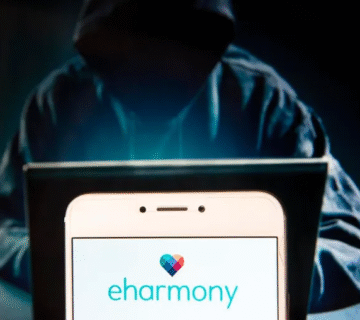If you’re searching for answers about what happened to eHarmony.com dating—why it’s changed, what the biggest updates are, the state of its reputation, and how it fits in the current universe of online romance.
eHarmony.com: From Pioneer to Present Day
eHarmony.com first launched in 2000, creating an entirely new kind of dating service based on a deep compatibility quiz and psychology-driven matching. For years,
eHarmony’s message was clear: it was the platform for singles who wanted serious relationships and marriage,
not fleeting flings or endless swiping.
Early Success & Unique Appeal
-
Its founder, Dr. Neil Clark Warren, built eHarmony around scientific compatibility matching, which was groundbreaking at the time.
-
The sign-up process was lengthy (its quiz could take over an hour!), filtering out anyone not truly serious.
-
eHarmony rapidly earned a reputation for helping people get married—at some points claiming to be behind as many as 4% of US marriages.
Major Changes and Evolution (2010–2025)
As the online dating market exploded—ushering in swipe apps, fast sign-ups, and a casual approach—eHarmony faced both internal and external pressure to adapt.
1. Shorter Sign-Up & Modernized Matching
-
The infamous long quiz is now streamlined (10–20 minutes, down from 400+ questions).
-
Interface and experience have been rebuilt for mobile: the eHarmony app now mirrors the website’s process—compatibility-driven, but with modern features and less friction.
2. Inclusivity, Lawsuits & Platform Policies
-
For most of its existence, eHarmony was for heterosexual matches only, which led to multiple high-profile lawsuits about discrimination. To settle, the company launched a separate service called Compatible Partners for same-sex couples. In 2019, same-sex matching was finally integrate into the main platform.
-
There’s still progress to made: as of 2025, non-binary and bisexual users face some hurdles, and platform statements point toward ongoing product development for better inclusion.
3. Marketing Claims & Regulatory Pushback
-
eHarmony was once famous for saying its “science” was proven to create enduring matches. However, regulatory and advertising authorities in the US and UK (and elsewhere) have since force the company to retract or soften some of these claims, saying there’s insufficient proof that its matchmaking is truly “scientifically proven”.
4. Subscription Practices, Auto-Renewal & Controversy
-
One of the biggest modern criticisms is eHarmony’s payment structure and cancellation policies. Users report confusion and frustration over auto-renewal charges—they’ve found it hard to cancel and easy to wind up locked into expensive, lengthy subscriptions they didn’t anticipate.
-
In 2023, the Australian Competition & Consumer Commission brought legal action against eHarmony for “subscription traps,” alleging the company made it difficult to know costs, durations, and to cancel recurring charges. This reflects hundreds of customer complaints collected over several years.

The eHarmony.com Experience in 2025
What You Get (and What’s Change):
-
Free Basic Membership: Lets you create a profile and view a blurred list of daily “curated” matches, but you cannot message or see clear photos unless you upgrade.
-
Premium Memberships: These are require for any real interaction—unlock messaging, photo access, advanced filters, and video chat.
-
No More Open Searches: eHarmony has closed off user browsing; instead, the algorithm provides a select list of matches every day.
-
Safety and Verification: eHarmony heavily promotes anti-scam and security features. All users take a compatibility quiz, and phone/email verification is common.
What Hasn’t Changed:
-
eHarmony remains committed to “relationship-first” dating. Most users are 30+ and there’s a high percentage of singles seeking marriage or long-term partnership.
-
Unlike most dating apps, the platform discourages “browsing for fun” and filters out those not truly invested in a relationship.
Criticism, User Voices & Real-World Impact
The Good:
-
Many users report finding real relationships, some marriages and deep connections—especially among those 40+ and up, and for those who appreciate slower, intentional dating.
-
The “seriousness filter” is real: paid, in-depth onboarding keeps out most trolls, scammers, and spammers.
The Not-So-Good:
-
Ongoing complaints focus on hard-to-cancel subscriptions, unexpected charges, and a lack of transparency with payment plans.
-
Critics say the platform sometimes over-promises results from its algorithm.
-
Non-binary and bisexual individuals, as well as some LGBTQ+ users, seek better inclusion and user experience.
Practical Tips: Using eHarmony in 2025
-
Read the Fine Print: Before paying, double-check the length and price of all plans and know when and how to cancel.
-
Take Time on Your Profile: Genuine intent is rewarde—complete the quiz carefully and fill out sections in detail.
-
Lean into the Process: Unlike Tinder/Bumble, eHarmony’s “curated match” approach can be slower but more meaningful. Patience is part of the experience.
-
Report Issues: Use customer support for clarification on billing or cancellations, and the reporting tools for any safety concerns.
Read More: Creating a funny profile that stands out
Is eHarmony Still Worth It?
For singles seeking intentional, relationship-focused dating—especially 30s and up—eHarmony is still a leading platform with a strong, active, mostly US-based user base and robust anti-scam tools. But be aware of the long-term commitment when you subscribe and closely review the current policies before paying.








[…] Read More: What Happened to eHarmony.com Dating? A Deep, Unique & Google-Optimized 2025 Guide […]